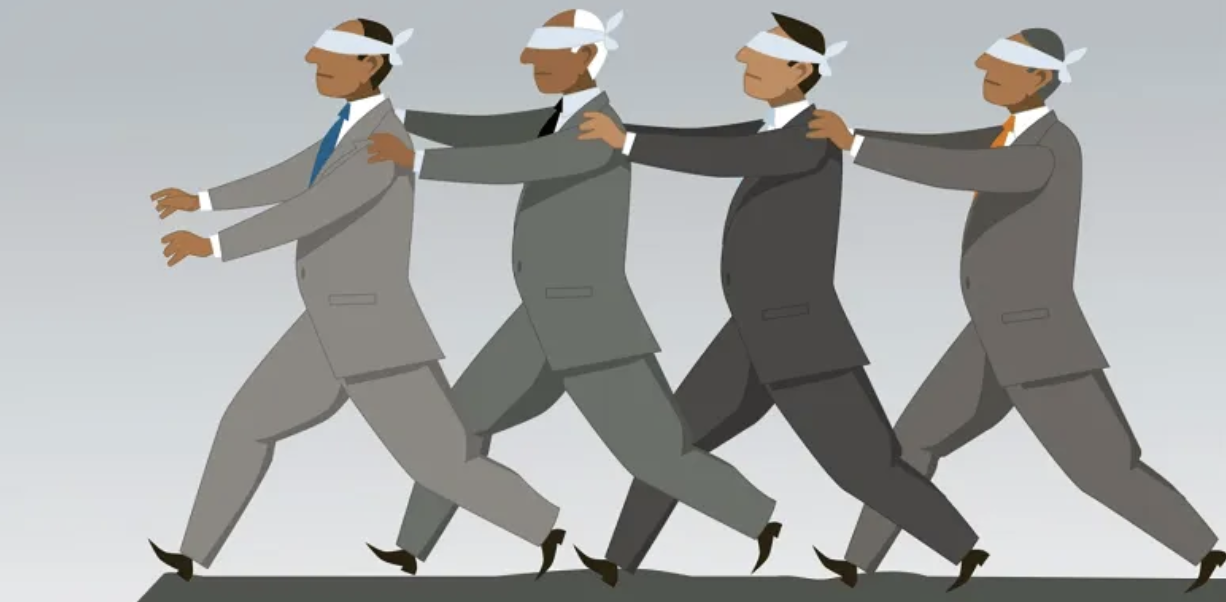To be human is to be part of a group in one way or another. And in most cases, belonging to a group also means having to take some collective decisions. Have you ever observed people keeping their thoughts or opinions to themselves because they differ from that of the group? Have you ever refrained from challenging a certain decision because it would create friction between you and the other members of the group? Why does this happen?
The term “groupthink” was first used by Irving Janis, a social psychologist, in the early 1970s. Groupthink is used to describe the phenomenon where people within a group would aim to decide with consensus, and would usually disregard any personal doubts or queries to maintain harmony within the group. People may adopt the opinions of others, refrain from arguing based on personal morals and beliefs, and may even disregard potential consequences to further the group’s cause and prevent the group from disintegrating. Therefore, groupthink in a nutshell is specifically related to making irrational or ill-informed decisions, all to prevent the group from dissent. These could be observed in smaller groups such as friend groups or family, but would also affect larger groups such as organizations, the military etc.
Groupthink has some major disadvantages such as:
- Poor decision making
- An environment that inhibits creativity as individual inputs are not always welcome
- Lack of space or opportunity for people to think critically and question the group’s motives and ethics
- Making decisions that may disregard consequences to other people outside of the group
- Lack of diversity and inclusivity
- Potential dissatisfaction among members if they do not get to make decisions that fit their belief system
- Building intolerance towards differing opinions, or always viewing differing opinions in a negative manner
It may be especially important to be aware of groupthink in the Indian context as collectivistic cultures require members of the group to fit in and adhere to the set social norms. To ensure the smooth functioning of any group, be it a family or a big company, it is important to tread the fine line between cohesion and groupthink to ensure the satisfaction of group members and effective and thoughtful decision-making in the group.
Context is important to recognize and prevent groupthink. In the context of companies or organizations, as is the scope of this article, the following techniques may help prevent groupthink:
- Ensuring diversity among the group members and avoiding biases during recruitment so that a relatively homogenous set of people are not the only ones in the group
- Opinions of all the relevant people are collected before the leader gives their opinion. The leader checks in with other members after giving their opinion and provides equal space for disagreement and agreement
- Leaders not only encourage people to raise their concerns and questions but also model a respectful environment for all opinions, whether similar or different, to be heard and considered
- Many have recommended the “devil’s advocate” strategy, where one person plays the devil’s advocate for all opinions or perspectives that are presented, to ensure that the matter is approached from all aspects
- Creativity, dissent, and reasonable risk-taking behavior should be rewarded, and members should not feel threatened for expressing their opinions
- Management should be aware of various decision-making models and should be aware of the patterns that may play out and how to effectively handle them
It is important to create a safe and respectful environment within groups from the start to ensure effective decision-making. While it is true that two heads are better than one, it is also true that too many cooks spoil the broth.
References
Cherry, K. (2022, November 12). What is groupthink? Verywellmind.
https://www.verywellmind.com/what-is-groupthink-2795213
Psychology Today. (n.d). Groupthink.
https://www.psychologytoday.com/us/basics/groupthink
Yates, J.F. & de Oliveira, S. (2016). Culture and decision making. Organizational Behavior
and Human Decision Process, 136, 106-118. https://doi.org/10.1016/j.obhdp.2016.05.003
About the author


